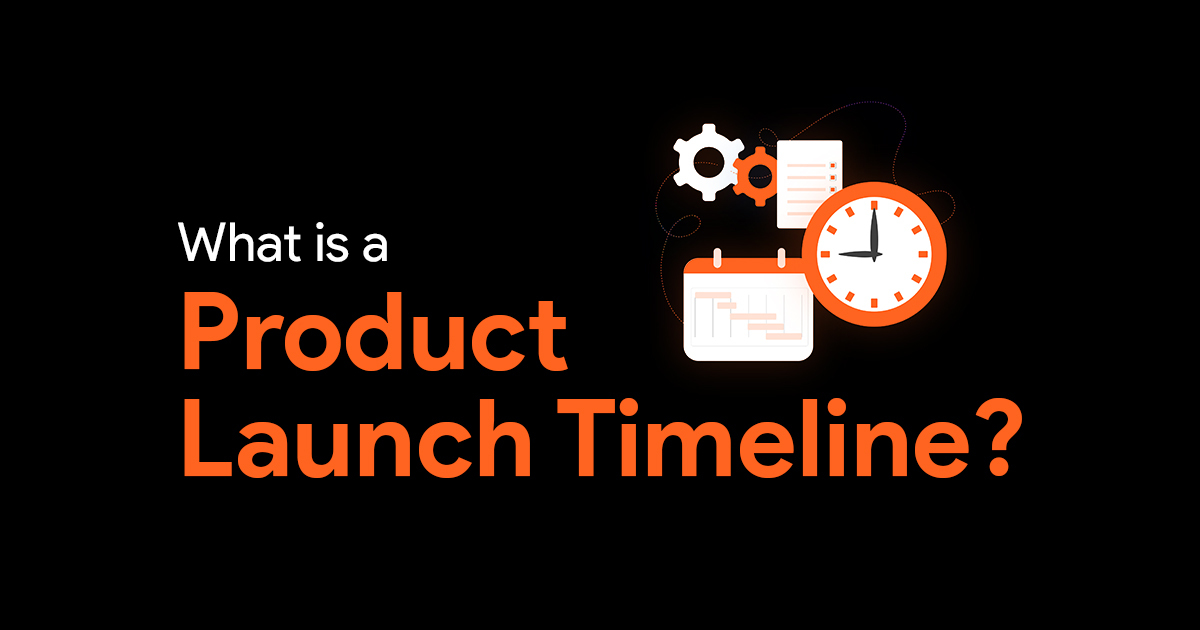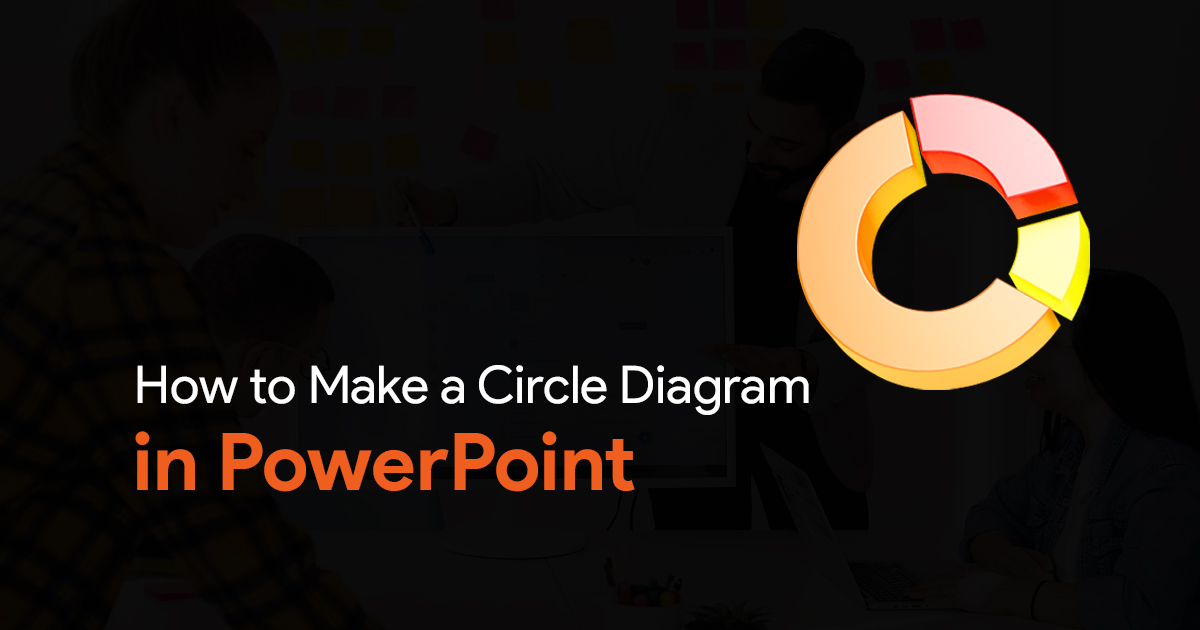What is a Product Launch Timeline?

Every day, companies churn out hundreds of new products globally. Barring a few innovative products, most newly launched merchandise enters markets that have similar or competing goods. So how will you make people notice your new product? Let’s say you have come up with a unique, innovative item. How do you get people to know about it and convince them of its value?
Posting links on your social media pages and hoping that you’ll be flooded with orders is not the way to go.
The answer to both these questions is simple: you need an effective product launch. This can help you build your brand image and make sure that your new merchandise is launched successfully. You can leverage any of the numerous organizational tools available to help you plan your impending product launch. A product launch timeline is one tool that helps you to prepare for every stage in the process and organize every detail thoroughly. We will take a look at what product launch timelines are, their importance, steps and tips for strategizing to achieve maximum success.
Before we move on, if you’re looking to create a product launch timeline, take a look at these timeline templates for PowerPoint. You will save a ton of time if you use these pre-built templates instead of designing a timeline from scratch. Plus, they’re so well designed that your presentation will look impressive. Have a look! Anyway, moving on…
Defining Product Launch Timeline
Entrepreneurs and marketers use product launch timelines to ensure they stay on track to launch a product successfully. It’s a predetermined plan that helps organizations to plan their product launch strategy to gain maximum benefits. A timeline is a visual depiction of the important stages in a launch. The stages could differ based on the type of your goods, and your goals. Of course, there is always the possibility of unforeseen circumstances disrupting your carefully planned timeline. Yet, timelines provide a pretty dependable structure for the product launch. This way, even if you have to move away from the original plan to adapt to changed circumstances, you can stay focused on the end goal.
Having an effective strategy to launch your product is essential; after all, you have worked hard to come up with this product.
This is a guide that will help you know all about the product timeline.
We have already established that the stages in the launch process could differ for each product depending on its type and end goals; different products also have different target audiences. This means there is no set formula or one-size-fits-all solution for a successful product launch. What you can do is consider all possible scenarios and come out with a well-thought-out strategy to avoid failure. You may need to incorporate beta testing and strategy development depending on the type of product you have developed.
A well-crafted product release can also help you build your brand and tap into new markets.
The Importance of a Product Launch Timeline
A product launch is a platform for showcasing your latest product to not just customers, but wholesalers, investors, influencers, and other stakeholders. It is common to create hype around new products to ensure heavy demand in the early days of the launch and make your brand more visible to everyone.
The timing of the launch is of utmost importance. Ill-timed launches have a high probability of failure. In fact, it is one of the most critical factors that could decide the failure or success of a product. If your innovation is ahead of its time – meaning that consumers are not warming up to it – you may have poor sales. On the other hand, if you launch in a market that is already saturated with similar products, your product may simply get ignored in the crowd of products.
A product launch timeline can help you split the launch process into several manageable portions, and plan specific activities to make the launch easier to handle on the whole.
You can prepare well for each stage of the launch, and create a buzz around your product; anticipation is one of the emotions that motivate people to buy a new product.
Timelines also help team members from different departments to collaborate with regard to deadlines for specific tasks.
Creating a Successful Product Launch Timeline
Depending on the needs of your company, the timing of your launch may differ. The steps in the timeline of a product launch mentioned below are by no means definitive. they are a guideline, and you can tweak them as per your objectives. It will, however, benefit you to think your product launch through these crucial phases.
1. Conduct Market Research
Carrying out market research will help you identify your target audience and your competitors. Without knowing who is your competitor and what their strengths and weaknesses are, or the pain points and preferences of your target customers, your product launch could fail. But with proper research, you will be able to figure out the market position. This means understanding how consumers recognizes and distinguishes between similar brands and goods. A perceptual map helps in understanding how consumers compare you with competing brands.
2. Know your Target Audience
The next step is to categorize your customers according to common characteristics like age, gender, region, economic status etc. The success of your product launch depends on the number of people you can influence with your marketing. Hence it is important to know the people you are targeting, and the best way to appeal to them. Once you have categorized them, you can create buyer personas for each category. A buyer persona defines what type of customer they are, what are their pain points, what they like, and what they don’t. This helps you to craft your messaging to appeal to them.
3. Get Feedback About your Marketing Content
It is a good idea to start the planning for your launch a few months before the possible launch date. To be able to convince people about your product, it is vital that you understand your target audience well along with your product. Ask for feedback from potential customers, friends, family, mentors, and others. Take their comments into consideration and make changes to your messaging if necessary, so that there is clarity in the way you position your product to the public.
4. Start Off with The Preliminary Messaging
We have already seen above that it is important to identify and know your target audience when you collect feedback. Knowing the target audience and their pain points, preferences and habits will also help you choose the optimal advertising platforms. The marketing and advertising channels should be those your target audience frequents and likes so that your product gets maximum exposure. Having a proper understanding of your product, audience, and marketing channels can also help you in crafting the right content that resonates with your audience and is a good fit for our marketing strategy.
The next step is envisaging the manner in which your target audience will respond to your messaging – the portrayal and purposes of your product. You should be ready with the value proposition and unique selling proposition of your product; that is, why your product is better than a similar one from your competitors. This is also referred to as product positioning. Ask yourself these questions:
- What does my product do?
- What are the benefits it offers people?
- How is it better than other products that are similar?
- What pain points of people does it resolve?
Once you have answered these questions and decided on your ideal marketing channels, you can start creating and posting your preliminary messaging for marketing. This is the first indication to people that you are going to launch a new product.
5. Planning for the Launch
It makes sense to begin planning the product launch a few months before the designated launch date – at least 3 to 4 months prior. It gives you time to envision the different stages of the project and to organize your thoughts. Think of an ideal date for the launch, and then work backwards, chalking out each step and activity you need to carry out to have a successful launch. You should also think of how much time each stage will need. This will help you set an approximate date to start putting your plan into action.
6. Get your Marketing Content Ready
Think about the content you want to create, publish, and promote while planning the launch strategy. Get documents ready to help you spread the message to others regarding your product, its features, and value propositions. Think about the materials you may require to begin marketing your product, and start with draft copies. Ideally, you will need:
- A landing page for your website
- Product development updates
- Email marketing or newsletter content
7. Get Your Team Ready
Make sure that everyone in the launch team has a copy of the content, and get inputs from them when you are designing your content. This is also a good time to put together your marketing team, and putting out feelers to affiliate marketers and influencers, and work out how you can collaborate with them for the product launch. You could ask them to be your beta testers if you have a few products ready in hand.
8. Do Beta Testing
This is a good time to conduct beta testing; you can contact more affiliate marketers and acquaintances who might be willing to test your product. Their feedback can help in responding quickly to any issues they point out, and tweaking your product to make it more acceptable to consumers.
9. Confirm the Launch of your Content
Give your content a final once-over a couple of months before your product launch date. Make sure that all the pertinent inputs gained from the beta testers and potential customers are included in the messaging.
10. Announce your Launch
Ideally, you should make an announcement regarding the launch a month before you are scheduled to do it. You can do it across multiple channels like social media handles, your blog, website, and so on.
11. Publish your Content
A few weeks before the scheduled launch date, check with your affiliates to confirm that they are well equipped to market your content at the right time.
12. Create your Sales Pipeline or Funnel
Two weeks before the launch date, step up your marketing efforts, making sure that visitors to your social media pages, blogs, or affiliate material, can reach your landing page smoothly, and can take the desired action – purchasing your product. You can invest in targeted advertising on social media, boosting your influencer content and so on for quicker results and more traffic.
13. Fine-tune Everything
Check whether your links are working properly a week prior to the launch and that customers are redirected to the landing page without hassles, and are able to complete the transaction smoothly. If you detect any broken links, get them fixed immediately.
14. You’re Ready to Launch
And the moment that you’ve worked so hard for, and have waited for, is finally here! It’s an exciting thing to launch a new product. If you have done things right, positive reviews may already have started appearing on social media about your product.
15. How Successful was Your Launch? Measure it.
Collect data from your product launch and compare it with the projected figures. Check what methods worked and what failed. Did customers respond better to a particular platform or type of content? This will help you to plan future product launches even better and use the most apt marketing channels.
The Secrets to a Successful Product Launch Timeline
We live in a world of information overload; there are volumes of content everywhere, and getting noticed can be tough. Here are a few secret tips that can help you overcome these hurdles and get the attention of your audience.
- Create hype and build anticipation with the help of online banners, opt-in forms, positive customer feedback (beta testers) and active engagement with your audience on social media. Discover people who are likely to be your brand advocates and feed them titbits of information to increase curiosity and excitement around the new product.
- Use positive and confident terminology in your marketing messages to build trust, like absolutely, surely, certainly etc. Tell potential customers how your product resolves their pain points or adds value – create a need for the product in their minds.
- Make your timeline aesthetically pleasing, especially when you have a cross-departmental team and have to share the timeline with everyone. Pay attention to the layout, format, fonts, colour theme, etc, as it will help others browse the document easily. Make sure that important milestones are properly highlighted.
- When you have a team working on the product launch, specific departments will be assigned specific work. To ensure that these tasks are completed in time, you can incorporate calls to action in your timeline. For example, tasking the design team to come up with illustrations for social media posts. You can include CTAs in all the phases in your timeline to ensure the timely completion of tasks.
- Ensure that all the production needs of the current stage are fulfilled before moving to the next stage.
- You can download free product launch timeline templates online; for more options, you can opt for the premium versions too. There are several sites that allow you to download the templates into MS Word, Excel, and other apps.
Conclusion
A well-planned product launch can be the deciding factor for its success or failure. Make use of the product launch timeline to stay on track, plan well, and have a great product launch. It is a cost-effective business tool that can save you both time


